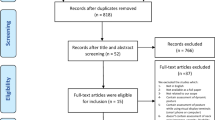Abstract
The present study aimed to identify some of the mechanisms affecting spinal compressive load-bearing capacity in neutral postures. Two spinal geometries were employed in the evaluation of the stabilizing mechanisms of the spine in standing neutral postures. Large-displacement finite-element models were used for parametric studies of the effect of load distribution, initial geometry, and pelvic rotation on the compression stability of the spine. The role of muscles in stabilization of the spine was also investigated using a unique muscle model based on kinematic conditions. The model with a realistic load configuration supported the largest compression load. The compressive load-bearing capacity of the passive thoracolumbar spine was found to be significantly enhanced by pelvic rotation and minimal muscular forces. Pelvic rotation and muscle forces were sensitive to the initial positioning of T1 and the spinal curvatures. To sustain the physiological gravity load, the lordotic angle increased as observed in standing postures. These predictions are in good agreement with in vitro and in vivo observations. The load-bearing potential of the ligamentous spine in compression is substantially increased by controlling its deformation modes through minimal exertion of selected muscles and rotation of the pelvis.
Similar content being viewed by others
References
Adams MA, Dolan P, Hutton WC (1988) The lumbar spine in backward bending. Spine 13:1019–1026
Andriacchi T, Schultz A, Belytschko T (1974) A model for studies of mechanical interactions between the human spine and rib cage. J Biomech 7:497–507
Aspden RM (1992) Review of the functional anatomy of the spinal ligaments and the lumbar erector spinae muscles. Clin Anat 5:372–387
Bergmark A (1989) Stability of lumbar spine. Acta Orthop Scand [Suppl 230] 60:1–54
Bernhardt M, Bridwell KH (1989) Segmental analysis of the sagittal plane aligment of the normal thoracic and lumbar spines and thoracolumbar junction. Spine 14:717–721
Cholewicky J (1993) Mechanical stability of the in vivo lumbar spine. Thesis, University of Waterloo, Waterloo, Canada
Duval-Beaupere G, Schmidt C, Cosson P (1992) A barycentremetric study of the sagittal shape of spine and pelvis: the conditions required for an economic standing position. Ann Biomed Eng 20:451–462
Gracovetsky S (1988) The spine engine. Springer, Vienna New York, pp 151–152
Gracovetsky S, Farfan H, Helleur C (1985) The abdominal mechanism. Spine 10:317–324
Hjalmars S (1988) A beam model of the human spine under muscular action. J Tech Phys 29:43–49
Jackson RP, McManus AC (1994) Radiographic analysis of sagittal plane alignments and balance in standing volunteers and patients with low back pain matched for age, sex and size: a prospective controlled clinical study. Spine 19:1611–1618
Keegan JJ (1951) Alterations of the lumbar curve related to posture and seating. J Bone Joint Surg [Am] 35: 589–603
King-Liu YK, Wickstrom JK (1973) Estimation of the inertia property distribution of the human torso from segmented cadaveric data. Perspect Biomed Eng, pp 203–213
Lucas DB, Bresler B (1961) Stability of the ligamentous spine. Biomechanics Laboratory, Berkeley, Report 40WI-CA 4361
Massion J, Gurfinkel V, Lipshits M, Obadia A, Popov K (1993) Axial synergies under microgravity conditions. J Vestib Res 3:275–287
McGill SM (1991) Kinetic potential of the lumbar trunk musculature about three orthogonal orthopaedic axes in extreme postures. Spine 16: 809–815
McGlashen K, Ashton-Miller JA, Green M, Schultz AB (1990) Trunk positioning accuracy in the frontal and sagittal planes. J Orthop Res 9:576–583
Parnianpour M, Shirazi-Adl A, Sparto P, Dariush B (1994) The effect of compressive load on myoelectric activities of ten selected trunk muscles. In: Proceedings of the 12th TCIEA, vol 3. Toronto, Canada, August 15–19, 1994, pp 119–121
Pearsall DJ, Reid JG (1992) Line of gravity relative to upright vertebral posture. Clin Biomech 7:80–86
Scholten PJM, Veldhuizen AG, Grootenboer HJ (1988) Stability of the human spine: a biomechanical study. Clin Biomech 3:27–33
Shirazi-Adl A, Parnianpour M (1993) Nonlinear response analysis of the human ligamentous lumbar spine in compression — on mechanisms affecting the postural stability. Spine 18: 147–158
Shirazi-Adl A, Parnianpour M (1996) Stabilizing role of moments and pelvic rotation of human spine in compression. J Biomech Eng 118:26–31
Stokes IAF, Gardner-Morse M (1995) Lumbar spine maximum efforts and muscle recruitment patterns predicted by a model with multijoint muscles and joints with stiffness. J Biomech 28:173–186
Takashima ST, Singh SP, Haderspeck KA, Schultz AB (1979) A model for semi-quantitative studies of muscle actions. J Biomech 12:929–939
Voutsinas SA, MacEven GD (1984) Sagittal profiles of the spine. Clin Orthop 210:235–242
Yettram AL, Jackman MJ (1980) Equilibrium analysis for the forces in the human spinal column and its musculature. Spine 5:402–411
Yettram AL, Jackman MJ (1982) Structural analysis for the forces in the human spinal column and its musculature. J Biomed Eng 4:118–124
Author information
Authors and Affiliations
Rights and permissions
About this article
Cite this article
Kiefer, A., Parnianpour, M. & Shirazi-Adl, A. Stability of the human spine in neutral postures. Eur Spine J 6, 45–53 (1997). https://doi.org/10.1007/BF01676574
Received:
Revised:
Accepted:
Issue Date:
DOI: https://doi.org/10.1007/BF01676574




